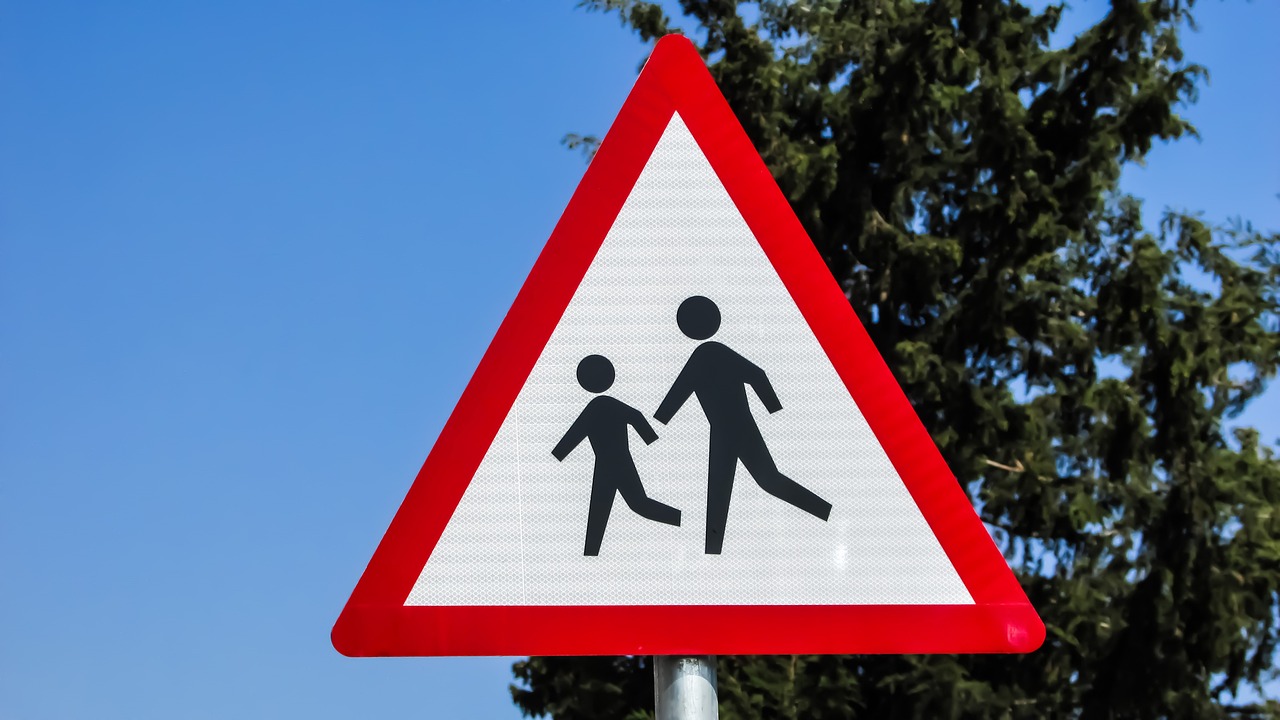School Safety: Ensuring the Security of Students
In today’s world, the safety of students in schools has become more critical than ever. With the rise of various threats, both physical and emotional, it is essential to prioritize the security of our educational institutions. Imagine a place where students can freely express themselves, learn, and grow without the looming fear of danger. This is the vision we strive to achieve through comprehensive school safety measures. By ensuring a secure environment, we not only protect our students but also foster their mental health, academic performance, and overall well-being.
Understanding the significance of school safety is crucial for creating a conducive learning environment. A safe school setting is not just about physical security; it encompasses emotional and psychological safety as well. When students feel secure, they are more likely to engage in learning and participate in school activities. This sense of safety can lead to improved academic performance and better relationships among peers. Moreover, parents have a right to expect that their children are safe while they are at school. Therefore, school safety should be a top priority for educators, administrators, and parents alike.
Schools face various threats that can disrupt the educational process. These threats can be broadly categorized into two groups: physical threats and emotional threats. Recognizing these potential dangers is essential for developing effective prevention and response strategies tailored to each situation. For instance, bullying is an emotional threat that can have lasting effects on a student’s mental health, while physical threats may include violence or natural disasters. Understanding these threats allows schools to implement targeted interventions.
Physical threats in schools encompass violence, weapons, and intrusions. Addressing these issues requires comprehensive safety measures, including security personnel, surveillance systems, and emergency preparedness plans. Schools must be equipped to handle emergencies, ensuring that students and staff know how to respond. For example, conducting regular drills can familiarize everyone with the procedures to follow in case of an emergency. Furthermore, the presence of security personnel can act as a deterrent to potential threats.
Bullying remains a prevalent issue in schools, affecting students emotionally and academically. It can lead to serious consequences, including anxiety, depression, and decreased academic performance. Implementing anti-bullying programs and fostering a positive school culture can mitigate its effects. Schools should encourage open communication, allowing students to report bullying incidents without fear of retaliation. Creating a supportive environment where students feel safe to express their concerns is vital for addressing this issue.
Establishing clear emergency response protocols is vital for schools to handle crises effectively. Training staff and conducting drills prepares everyone to act swiftly in emergencies, ensuring student safety. Schools should have a detailed plan that outlines the steps to take during various emergencies, such as natural disasters, intrusions, or medical emergencies. Regularly reviewing and updating these protocols ensures that they remain effective and relevant to current threats.
With the rise of technology, schools must address cybersecurity threats. Protecting students' personal information and ensuring safe online practices are essential components of a comprehensive school safety strategy. Schools should implement robust cybersecurity measures, including firewalls, encryption, and regular software updates. Additionally, educating students about safe online behavior can help prevent issues such as cyberbullying and identity theft.
School administrators play a pivotal role in ensuring safety by implementing policies, training staff, and fostering communication between students, parents, and law enforcement to create a secure environment. Their leadership is crucial in establishing a culture of safety within the school. By prioritizing safety initiatives and allocating resources effectively, administrators can significantly enhance the overall security of the school environment.
Developing a comprehensive safety plan involves assessing risks, outlining procedures, and regularly reviewing and updating protocols to adapt to new challenges and ensure ongoing effectiveness. A well-structured safety plan should address various scenarios, from natural disasters to potential intruders. It should also include strategies for mental health support, recognizing that emotional well-being is just as important as physical safety.
Community involvement is crucial for enhancing school safety. Collaborating with local law enforcement, mental health professionals, and parents fosters a supportive network that contributes to a safer educational environment. When the community works together, it creates a sense of shared responsibility for student safety. Schools can organize community events to raise awareness and promote safety initiatives, encouraging everyone to play an active role in protecting students.
Training and education for staff and students are vital for promoting safety awareness. Regular workshops and drills equip individuals with the knowledge and skills to respond effectively to various emergencies. Schools should prioritize ongoing training, ensuring that staff members are well-prepared to handle safety issues and that students understand their role in maintaining a safe environment.
Implementing staff training programs ensures that educators are prepared to handle safety issues, including conflict resolution, emergency response, and recognizing signs of distress among students. These programs should be comprehensive and tailored to the specific needs of the school community. By investing in staff training, schools can create a more resilient environment where everyone feels empowered to contribute to safety efforts.
Educating students about safety practices through awareness campaigns fosters a culture of vigilance and responsibility. Empowering students to recognize and report potential threats enhances overall school security. Schools can organize activities, such as workshops or assemblies, to engage students in discussions about safety. When students understand the importance of their role in maintaining a safe school environment, they are more likely to take proactive measures.
- What are the main components of a school safety plan? A comprehensive school safety plan should include risk assessments, emergency procedures, communication strategies, and mental health support.
- How can parents contribute to school safety? Parents can engage in school safety initiatives, communicate with school officials, and support anti-bullying programs.
- What should students do if they witness bullying? Students should report bullying incidents to a trusted adult or use anonymous reporting tools if available.
- How often should emergency drills be conducted? Schools should conduct emergency drills at least twice a year, but more frequent drills can enhance preparedness.

Importance of School Safety
Understanding the significance of school safety is crucial for creating a conducive learning environment. When students feel safe, they are more likely to engage actively in their education, fostering a culture of academic excellence and emotional well-being. Imagine a classroom where every child can focus on their studies without the looming fear of violence or bullying; that’s the kind of environment we should strive to create. It’s not just about physical safety; it’s about nurturing a holistic atmosphere where students can thrive.
The impact of a secure school environment extends beyond the classroom walls. Research shows that when students perceive their school as safe, their mental health improves, leading to higher academic performance. In contrast, schools plagued by safety concerns often witness increased absenteeism, lower grades, and a higher dropout rate. Therefore, making school safety a priority is not just a policy decision; it’s an investment in the future of our children.
Furthermore, school safety is a shared responsibility. It involves educators, parents, students, and the community working together to create a secure environment. Effective communication among all stakeholders is essential. For instance, schools can implement programs that educate parents about potential threats and how they can contribute to safety measures. This collaboration can take many forms, such as:
- Regular safety meetings with parents and community members
- Workshops on recognizing signs of distress in children
- Creating a hotline for reporting suspicious activities
In addition to enhancing academic performance, a safe school environment also promotes social development. Students who feel secure are more likely to form positive relationships with their peers and teachers, which is essential for their social skills and emotional intelligence. A positive school culture that prioritizes safety can lead to a more cohesive community, where everyone feels valued and respected.
Moreover, the importance of school safety cannot be overstated in the context of today’s world. With the rise of technology, schools are not only dealing with physical threats but also with cybersecurity issues. Protecting students' personal information and ensuring safe online practices are vital components of a comprehensive school safety strategy. Schools must adapt to these evolving threats to safeguard their students effectively.
In essence, prioritizing school safety is about more than just protocols and policies; it’s about creating a nurturing environment where students can grow, learn, and thrive. The benefits of a safe school environment ripple outwards, affecting not just the individuals within the school but the community as a whole. Let’s work together to ensure that every child has the opportunity to learn in a safe and supportive environment.
1. Why is school safety important?
School safety is crucial for fostering a conducive learning environment, which positively impacts students' mental health, academic performance, and overall well-being.
2. What are the common threats to school safety?
Common threats include bullying, violence, natural disasters, and cybersecurity issues. Recognizing these threats is essential for developing effective prevention strategies.
3. How can parents contribute to school safety?
Parents can participate in safety meetings, educate themselves about potential threats, and collaborate with schools to create a safer environment.
4. What role does the community play in school safety?
The community can support schools by working with local law enforcement, mental health professionals, and parents to create a network that enhances safety.

Types of Threats in Schools
Schools, as safe havens for learning and growth, are unfortunately not immune to various threats that can disrupt this ideal environment. Understanding these threats is essential for educators, parents, and students alike. The reality is that threats can come in many forms, each posing unique challenges that require tailored responses. From bullying to natural disasters, being informed is the first step towards creating a safe school environment.
One of the most concerning threats is bullying, which can manifest in numerous ways, including physical, verbal, and cyberbullying. The emotional and psychological impact of bullying can lead to serious consequences for students, affecting their mental health and academic performance. It's crucial for schools to recognize the signs of bullying and implement effective anti-bullying programs that promote a culture of respect and inclusion.
In addition to bullying, schools face the threat of violence, which can include everything from fights between students to more severe incidents involving weapons. The presence of violence in schools can create a climate of fear and anxiety, hindering students' ability to focus on their studies. To combat this, schools must adopt comprehensive safety measures, such as having trained security personnel, implementing surveillance systems, and preparing emergency response plans that outline clear protocols for handling violent situations.
Furthermore, natural disasters like earthquakes, floods, or severe weather can pose significant risks to the safety of students and staff. Schools need to be prepared for such events by developing robust emergency preparedness plans that include evacuation routes, communication strategies, and regular drills to ensure everyone knows what to do in case of an emergency. The unpredictability of nature requires schools to be proactive rather than reactive.
Another emerging threat in today's digital age is cyberbullying and cybersecurity issues. With the increasing reliance on technology in education, students are more vulnerable to online harassment and data breaches. Schools must prioritize cybersecurity by educating students on safe online practices and protecting personal information. This includes implementing strong passwords, monitoring online interactions, and promoting responsible digital citizenship.
In summary, the types of threats facing schools are diverse and complex. By recognizing the various forms of potential danger—ranging from bullying and violence to natural disasters and cybersecurity issues—schools can develop effective prevention and response strategies. Creating a safe educational environment is a collective effort that requires the involvement of educators, parents, students, and the wider community.
- What are the most common threats to school safety? The most common threats include bullying, violence, natural disasters, and cybersecurity issues.
- How can schools prevent bullying? Schools can prevent bullying by implementing anti-bullying programs, fostering a positive school culture, and providing training for staff and students.
- What should schools do in case of a natural disaster? Schools should have a comprehensive emergency preparedness plan that includes evacuation routes, communication strategies, and regular drills.
- How can students be educated about cybersecurity? Schools can educate students about cybersecurity through workshops, awareness campaigns, and by promoting responsible digital citizenship.

Physical Threats
In today's educational landscape, pose a significant concern for schools, requiring immediate attention and effective strategies. These threats can manifest in various forms, including violence among students, the presence of weapons, and unauthorized intrusions into school premises. Each of these threats not only jeopardizes the safety of students and staff but can also create an atmosphere of fear and anxiety, hindering the learning process. Imagine walking into a school where students feel uneasy, constantly looking over their shoulders. This is not the environment conducive to education.
Addressing physical threats requires a multifaceted approach. Schools must invest in comprehensive safety measures to effectively combat these issues. For instance, the presence of trained security personnel can deter potential threats and provide immediate assistance in case of emergencies. Additionally, the installation of surveillance systems acts as both a preventive measure and a means of accountability, ensuring that any incidents can be monitored and addressed promptly.
Moreover, emergency preparedness plans play a crucial role in safeguarding the school environment. These plans should include detailed procedures for various scenarios, such as lockdowns or evacuations, ensuring that everyone knows their role during a crisis. Regular drills are essential for reinforcing these protocols and instilling confidence among students and staff. It’s like practicing for a big performance; the more you rehearse, the better you become at handling unexpected situations.
To give a better understanding of the types of physical threats schools might face, consider the following table:
| Type of Threat | Description | Preventive Measures |
|---|---|---|
| Violence | Physical altercations between students or external aggressors. | Conflict resolution programs, counseling services. |
| Weapons | Possession of firearms or other dangerous items on campus. | Metal detectors, security screenings. |
| Intrusions | Unauthorized individuals entering school grounds. | Access control systems, visitor checks. |
In conclusion, addressing physical threats in schools is not just about implementing policies; it’s about creating a culture of safety where students can thrive without fear. By employing a combination of security measures, preparedness plans, and community involvement, schools can foster an environment that prioritizes the well-being of every individual on campus.
- What are the main types of physical threats in schools? Physical threats include violence, weapons, and unauthorized intrusions.
- How can schools prevent violence? Implementing conflict resolution programs and providing counseling services can help mitigate violence.
- What role do security personnel play in schools? Security personnel help deter threats and provide immediate assistance during emergencies.
- Why are emergency preparedness plans important? They ensure that students and staff know how to respond effectively in crisis situations.

Bullying and Its Impact
Bullying is a pervasive issue that affects students in schools across the globe, leaving deep emotional scars that can last a lifetime. It is not merely a rite of passage or a phase that children go through; rather, it can have serious consequences on a student's mental health and academic performance. The emotional toll of bullying can lead to feelings of isolation, anxiety, and depression, which can hinder a child's ability to learn and thrive in a school environment. Imagine trying to concentrate on your studies while constantly worrying about being targeted by your peers—it's a daunting thought!
Research indicates that students who are bullied are more likely to experience a decline in academic performance. They may avoid school altogether, leading to increased absences, which only exacerbates their educational challenges. Moreover, the impact of bullying is not limited to the victims alone; it creates a toxic environment that affects the entire school community. Students who witness bullying can also experience feelings of helplessness and fear, contributing to a culture of silence where bystanders do not intervene.
To combat bullying effectively, schools must implement comprehensive anti-bullying programs that foster a positive school culture. These programs should focus on:
- Awareness: Educating students about the different forms of bullying, including physical, verbal, and cyberbullying.
- Reporting Mechanisms: Creating safe and anonymous ways for students to report bullying incidents.
- Support Systems: Providing counseling and support for both victims and perpetrators to address the underlying issues.
Furthermore, fostering a sense of community and belonging can significantly reduce instances of bullying. When students feel connected to their peers and the school environment, they are less likely to engage in harmful behaviors. Schools can promote this sense of community through team-building activities, mentorship programs, and inclusive events that celebrate diversity.
In conclusion, addressing bullying is not just about stopping negative behavior; it’s about creating a nurturing environment where all students can feel safe and valued. By prioritizing anti-bullying initiatives and encouraging open dialogue, schools can help mitigate the impacts of bullying and ensure that every student has the opportunity to succeed.
Q: What is bullying?
A: Bullying is unwanted, aggressive behavior among school-aged children that involves a real or perceived power imbalance. It can manifest in various forms, including physical, verbal, and cyberbullying.
Q: How can I tell if my child is being bullied?
A: Signs that your child may be experiencing bullying include sudden changes in behavior, avoidance of school, unexplained injuries, and a decline in academic performance. Open communication is key to understanding their feelings.
Q: What should I do if I suspect my child is being bullied?
A: Encourage your child to talk about their experiences and reassure them that it’s not their fault. Contact school officials to discuss the situation and work together to find a solution.
Q: How can schools prevent bullying?
A: Schools can prevent bullying by implementing comprehensive anti-bullying policies, fostering a positive school culture, providing training for staff and students, and encouraging open communication among all members of the school community.

Emergency Response Protocols
Establishing clear is not just a good practice; it's a necessity in today's unpredictable world. Schools must be prepared to handle various emergencies, whether they stem from natural disasters, health crises, or security threats. The foundation of a robust emergency response plan lies in thorough preparation and training, which enables staff and students to react swiftly and effectively when the unexpected occurs.
First and foremost, a comprehensive emergency response protocol should include a detailed assessment of potential threats specific to the school environment. This involves understanding the unique challenges posed by the school's location, infrastructure, and student population. Once potential threats are identified, schools can develop tailored strategies to address each situation. For instance, a school located in a region prone to earthquakes may prioritize earthquake drills and preparedness kits, while another in an urban area might focus on lockdown procedures in the event of an intruder.
Moreover, training staff and conducting regular drills are essential components of any emergency response plan. By simulating real-life scenarios, schools can ensure that everyone knows their roles and responsibilities during a crisis. This not only builds confidence but also fosters a sense of community as staff and students work together to enhance safety. For example, a school might schedule quarterly drills that cover various emergencies, such as fire evacuations, lockdowns, and medical emergencies. These drills should be accompanied by a review of procedures to reinforce learning.
Communication plays a critical role in emergency response. Schools must establish clear lines of communication among staff, students, and parents. This can be achieved through regular updates via newsletters, emails, and meetings. Additionally, having a reliable communication system in place, such as a public address system or emergency alert apps, ensures that information can be disseminated quickly during a crisis. The goal is to keep everyone informed and calm, reducing panic and confusion.
Finally, it's important to involve the entire school community in safety planning. This means not only including staff but also engaging students and parents in discussions about safety protocols. Schools can host workshops or forums where community members can voice their concerns and suggestions. By fostering a culture of safety, schools can empower everyone to take an active role in maintaining a secure environment.
In summary, the effectiveness of emergency response protocols in schools hinges on thorough planning, regular training, clear communication, and community involvement. By prioritizing these elements, schools can create a safer environment for all, ensuring that students can focus on their education without the looming fear of potential threats.
- What should parents do to prepare their children for emergencies at school?
Parents can talk to their children about emergency procedures, participate in drills, and ensure their children know how to communicate during a crisis. - How often should emergency drills be conducted?
It is recommended that schools conduct emergency drills at least once per semester to keep everyone familiar with the procedures. - What role do students play in emergency response?
Students should be educated about emergency protocols and encouraged to report any suspicious behavior or threats to staff. - How can schools improve their emergency communication systems?
Schools can invest in updated technology, such as emergency alert systems and mobile apps, to ensure timely communication during crises.

Cybersecurity in Schools
In today's digital age, where technology permeates every aspect of our lives, has become an essential consideration for educators, administrators, and parents alike. With students increasingly relying on digital tools for learning, the potential risks associated with cyber threats cannot be overlooked. These threats can range from data breaches to cyberbullying, making it imperative for schools to implement robust cybersecurity measures to protect their students and staff.
One of the primary concerns regarding cybersecurity in schools is the protection of students' personal information. Schools collect a vast amount of data, including names, addresses, and academic records, which can be attractive targets for cybercriminals. To mitigate these risks, schools should adopt comprehensive data protection policies and ensure that sensitive information is stored securely. This includes utilizing encryption, restricting access to authorized personnel, and regularly updating security software to fend off potential breaches.
Moreover, schools must also focus on educating students about safe online practices. This involves teaching them about the importance of strong passwords, recognizing phishing attempts, and understanding the implications of sharing personal information online. By fostering a culture of online safety awareness, schools empower students to take responsibility for their digital footprints, thus enhancing overall cybersecurity.
To further reinforce these principles, schools can implement cybersecurity training programs for both staff and students. These programs can cover a range of topics, such as:
- Identifying and responding to cyber threats
- Best practices for password management
- Understanding the consequences of cyberbullying
- Safe usage of social media platforms
In addition to training and education, schools should also establish a clear incident response plan. This plan should outline the steps to be taken in the event of a cyber incident, ensuring that all stakeholders know how to respond effectively. Regular drills and updates to the plan will keep everyone prepared and informed about the latest cybersecurity protocols.
In conclusion, cybersecurity in schools is not just a technical issue; it's a holistic approach that involves the entire school community. By prioritizing cybersecurity measures, educating students and staff, and developing comprehensive response strategies, schools can create a safer digital environment that allows students to thrive academically and socially. As we navigate the complexities of the digital world, the importance of safeguarding our educational institutions cannot be overstated.
1. What are the common cybersecurity threats in schools?
Cybersecurity threats in schools can include data breaches, phishing attacks, malware infections, and cyberbullying. Each of these threats can have serious implications for students and staff.
2. How can schools protect student information?
Schools can protect student information by implementing data encryption, restricting access to sensitive data, conducting regular security audits, and providing training on data protection to staff and students.
3. Why is it important to educate students about cybersecurity?
Educating students about cybersecurity is crucial because it empowers them to recognize potential threats and take proactive measures to protect themselves online, fostering a culture of safety and responsibility.
4. What should a school’s incident response plan include?
A school’s incident response plan should include procedures for identifying a cyber incident, notifying relevant authorities, steps for containment and recovery, and communication strategies for informing students and parents.

Role of School Administration
The role of school administration in ensuring the safety of students cannot be overstated. Administrators are the backbone of any educational institution, responsible for not just the academic progress of students but also their safety and well-being. They create and implement policies that are designed to foster a secure environment, which is essential for effective learning. Think of them as the captains of a ship navigating through sometimes turbulent waters; their decisions can steer the entire crew towards safety or expose them to danger.
One of the primary responsibilities of school administrators is to develop a comprehensive safety plan. This plan should outline the specific procedures for various scenarios, such as fire drills, lockdowns, or even natural disasters. It’s not just about having a plan on paper; it’s about regularly reviewing and updating these protocols to adapt to new challenges. For instance, if a new threat emerges, such as a rise in cyberbullying incidents, the administration must be ready to modify their approach to address it effectively.
Moreover, school administrators are tasked with training staff to handle emergencies. This training is crucial because it equips teachers and support staff with the necessary skills to respond to crises. Imagine a situation where a student is in distress. If the staff are trained to recognize the signs and act promptly, they can potentially save a life. Regular workshops on topics such as conflict resolution, emergency response, and mental health awareness are essential. These sessions not only prepare the staff but also create a culture of safety within the school.
Another significant aspect of a school administrator's role is fostering communication between various stakeholders. This includes students, parents, law enforcement, and even mental health professionals. An open line of communication helps in identifying potential threats before they escalate. For example, if a parent notices a change in their child's behavior, having a direct channel to discuss this with school officials can lead to early intervention. Administrators can organize community meetings to discuss safety concerns, ensuring that everyone is on the same page and working together for the common goal of student safety.
To illustrate the multifaceted role of school administration in safety, consider the following table:
| Responsibility | Action | Outcome |
|---|---|---|
| Develop Safety Plans | Assess risks and create protocols | Preparedness for emergencies |
| Staff Training | Conduct regular workshops | Increased staff readiness |
| Community Engagement | Foster communication with parents and law enforcement | Stronger support network |
In summary, the role of school administration is pivotal in creating a safe educational environment. Their proactive measures, from developing safety plans to engaging the community, ensure that students can focus on what truly matters—learning and growing. When school administrators take their responsibilities seriously, they not only protect their students but also cultivate a nurturing atmosphere where everyone can thrive.
Q: What is the most important role of school administration in safety?
A: The most important role is to develop and implement comprehensive safety plans that prepare the school for various emergencies.
Q: How often should safety protocols be reviewed?
A: Safety protocols should be reviewed regularly, at least once a year, or whenever a new threat is identified.
Q: Why is community involvement important for school safety?
A: Community involvement fosters a supportive network, allowing for better communication and collaboration in addressing safety concerns.
Q: What types of training should staff receive?
A: Staff should receive training in emergency response, conflict resolution, and recognizing signs of distress among students.

Creating a Safety Plan
Developing a comprehensive safety plan for schools is not just a procedural formality; it’s a lifeline that ensures the well-being of students, staff, and visitors alike. A well-structured safety plan acts as a roadmap, guiding the school community through potential crises with clarity and confidence. But where do you start? First, it's essential to assess the unique risks that your school faces. This could range from natural disasters like earthquakes and floods to human-made threats such as violence or vandalism. Understanding these risks lays the groundwork for a tailored safety strategy.
Once the risks are identified, the next step is to outline specific procedures that will be activated in various scenarios. This includes defining roles for staff and students, establishing communication channels, and detailing evacuation routes. For instance, in the event of a fire, having a clear, practiced plan can mean the difference between chaos and calm. Schools can utilize evacuation maps displayed prominently around the building to ensure everyone knows the quickest way to safety. Additionally, it's crucial to regularly review and update these protocols to adapt to new challenges.
Moreover, involving the entire school community in the creation and refinement of the safety plan is vital. This means engaging not only teachers and administrators but also students and parents. By fostering an inclusive environment where everyone feels responsible for safety, schools can cultivate a culture of vigilance and preparedness. Regular meetings and workshops can serve as platforms for discussing safety concerns and brainstorming improvements. In this way, the safety plan evolves as a living document, reflecting the needs and realities of the school environment.
To make the safety plan even more effective, consider incorporating training sessions and drills into the school calendar. These activities help to ensure that everyone knows their role and can act swiftly in an emergency. For example, conducting fire drills at least once a semester not only reinforces the evacuation procedures but also builds confidence among students and staff. They learn that safety is a shared responsibility, and preparedness is key.
Finally, it's essential to document everything in a clear and accessible format. A well-organized safety plan should include:
- Risk assessment findings
- Detailed emergency procedures
- Roles and responsibilities of staff and students
- Communication strategies
- Training schedules
This document should be easily accessible to all staff members and should be reviewed regularly to incorporate feedback and changes in circumstances. By taking these steps, schools can create a robust safety plan that not only protects but also empowers the entire school community.
Q: What should be included in a school safety plan?
A: A comprehensive school safety plan should include risk assessments, emergency procedures, roles and responsibilities, communication strategies, and training schedules.
Q: How often should safety drills be conducted?
A: Safety drills should ideally be conducted at least once a semester to ensure that everyone is familiar with the procedures and can respond effectively in an emergency.
Q: How can parents get involved in the school's safety planning?
A: Parents can participate by attending safety meetings, providing feedback on the safety plan, and helping to raise awareness about safety practices within the school community.
Q: What role do students play in the safety plan?
A: Students can play a crucial role by being aware of safety procedures, participating in drills, and reporting any suspicious activities or concerns to staff.

Engaging the Community
Engaging the community in school safety initiatives is not just beneficial; it’s essential. When schools collaborate with local organizations, law enforcement, and parents, they create a robust support system that enhances the overall safety and well-being of students. Imagine a scenario where parents, teachers, and local authorities work together like a well-oiled machine, each playing their part to ensure that students feel secure and supported. This synergy can significantly reduce risks and improve the school environment.
One effective way to engage the community is through regular meetings and forums. These gatherings provide a platform for open dialogue where parents can express their concerns and suggestions regarding school safety. Furthermore, inviting local law enforcement to these meetings can help bridge the gap between the school and the community, fostering trust and cooperation. The more involved everyone is, the stronger the safety net becomes.
Additionally, schools can implement programs that encourage volunteerism among parents and community members. For instance, organizing safety patrols or mentoring programs can create a sense of ownership and responsibility towards the school's safety. When community members see themselves as stakeholders in the educational environment, they are more likely to contribute positively. Here are some ways to engage the community:
- Community Workshops: Host workshops focusing on safety awareness, where experts can share insights and strategies.
- Neighborhood Watch Programs: Collaborate with local law enforcement to establish programs that monitor school surroundings.
- Fundraising Events: Organize events to raise funds for safety equipment, ensuring that the school is well-equipped to handle emergencies.
Moreover, schools can leverage social media to keep the community informed and engaged. Regular updates about safety drills, policies, and community events can foster a sense of unity and shared purpose. This transparency not only builds trust but also encourages community members to take an active role in promoting safety. By creating a culture of communication and involvement, schools can effectively transform safety from a mere policy into a community-wide commitment.
In conclusion, engaging the community in school safety is not merely an option; it’s a necessity. When everyone works together, the safety of students is significantly enhanced, creating an environment where they can thrive academically and emotionally. After all, it takes a village to raise a child, and in the context of school safety, that village must be actively involved.
Q: Why is community engagement important for school safety?
A: Community engagement is crucial as it fosters collaboration among parents, local organizations, and law enforcement, creating a supportive network that enhances student safety.
Q: How can parents get involved in school safety initiatives?
A: Parents can participate in safety meetings, volunteer for safety patrols, and contribute to fundraising events aimed at improving school safety.
Q: What role does local law enforcement play in school safety?
A: Local law enforcement can provide valuable insights, support safety programs, and help establish a safe environment through community policing initiatives.
Q: How can schools promote transparency with the community regarding safety measures?
A: Schools can use social media and newsletters to keep the community informed about safety policies, drills, and events, fostering trust and cooperation.

Training and Education
are not just buzzwords in the realm of school safety; they are the backbone of a secure and responsive environment. Imagine a school where every staff member and student is equipped with the knowledge and skills to handle emergencies. Sounds ideal, right? This vision can become a reality through well-structured training programs and educational initiatives that promote safety awareness.
To kick things off, it’s essential to understand that safety is a shared responsibility. When students and staff are educated about potential risks, they become proactive rather than reactive. This proactive approach can significantly reduce the likelihood of incidents occurring. For instance, regular workshops can be organized to teach both students and staff about emergency protocols, conflict resolution, and recognizing signs of distress among peers. These workshops not only enhance knowledge but also foster a sense of community and teamwork.
One effective way to implement training is through staff training programs. These programs should cover a variety of topics, such as:
- Emergency response techniques
- Conflict resolution strategies
- Recognizing mental health issues
- First aid and CPR
By ensuring that educators are well-prepared to handle safety issues, schools can create an atmosphere where students feel secure and supported. Furthermore, staff members who are trained in conflict resolution can help mediate disputes before they escalate, effectively curbing potential violence.
Equally important is the need for student awareness campaigns. These campaigns serve to educate students about safety practices and empower them to take responsibility for their own safety as well as that of their peers. Imagine students being able to identify warning signs of bullying or knowing how to report suspicious behavior. This level of awareness can transform the school environment, making it a safer place for everyone.
To illustrate the impact of training and education, let’s look at a simple table that summarizes the key benefits:
| Training Type | Benefits |
|---|---|
| Staff Training | Improves response times, enhances conflict resolution, and promotes mental health awareness. |
| Student Awareness | Encourages vigilance, empowers reporting of incidents, and fosters a culture of safety. |
In conclusion, the integration of training and education into the fabric of school safety policies is crucial. It not only prepares individuals for emergencies but also cultivates a culture of safety that permeates the entire school environment. When everyone, from teachers to students, understands their roles and responsibilities, the entire community thrives. So, let’s invest in training and education today for a safer tomorrow!
Q1: Why is training important for school safety?
A: Training equips staff and students with the skills to respond effectively to emergencies, reducing risks and enhancing overall safety.
Q2: What types of training should be provided?
A: Training should include emergency response, conflict resolution, mental health awareness, and first aid.
Q3: How can students contribute to school safety?
A: Students can participate in awareness campaigns, report suspicious activities, and support their peers in distress.

Staff Training Programs
This article explores various aspects of school safety, focusing on strategies, policies, and practices that ensure a secure environment for students, staff, and visitors in educational institutions.
Understanding the significance of school safety is crucial for creating a conducive learning environment. It impacts students' mental health, academic performance, and overall well-being, making it a priority for educators and parents alike.
Schools face various threats, including bullying, violence, and natural disasters. Recognizing these potential dangers is essential for developing effective prevention and response strategies tailored to each situation.
Physical threats in schools encompass violence, weapons, and intrusions. Addressing these issues requires comprehensive safety measures, including security personnel, surveillance systems, and emergency preparedness plans.
Bullying remains a prevalent issue in schools, affecting students emotionally and academically. Implementing anti-bullying programs and fostering a positive school culture can mitigate its effects.
Establishing clear emergency response protocols is vital for schools to handle crises effectively. Training staff and conducting drills prepares everyone to act swiftly in emergencies, ensuring student safety.
With the rise of technology, schools must address cybersecurity threats. Protecting students' personal information and ensuring safe online practices are essential components of a comprehensive school safety strategy.
School administrators play a pivotal role in ensuring safety by implementing policies, training staff, and fostering communication between students, parents, and law enforcement to create a secure environment.
Developing a comprehensive safety plan involves assessing risks, outlining procedures, and regularly reviewing and updating protocols to adapt to new challenges and ensure ongoing effectiveness.
Community involvement is crucial for enhancing school safety. Collaborating with local law enforcement, mental health professionals, and parents fosters a supportive network that contributes to a safer educational environment.
Training and education for staff and students are vital for promoting safety awareness. Regular workshops and drills equip individuals with the knowledge and skills to respond effectively to various emergencies.
Implementing is essential for ensuring that educators are well-prepared to handle safety issues that may arise in the school environment. These programs not only focus on emergency response but also cover critical areas such as conflict resolution, mental health awareness, and recognizing signs of distress among students. In a world where threats can come from various angles, it's important that staff members feel confident and equipped to address any situation.
Training sessions can be structured in several ways, including:
- Workshops: Interactive sessions where staff can practice scenarios and learn from real-life case studies.
- Online Courses: Flexible learning options that allow staff to complete training at their own pace.
- Drills: Regularly scheduled drills that simulate emergency situations, ensuring staff know their roles and responsibilities.
Furthermore, a successful staff training program often includes a feedback mechanism. This allows educators to share their experiences and suggest improvements, creating a cycle of continuous learning and adaptation. For instance, after conducting a drill, staff members can meet to discuss what went well and what could be improved, ensuring that everyone is on the same page and ready for any eventuality.
Ultimately, the goal of these training programs is to foster a culture of safety within the school. When staff members are well-trained, they not only protect students but also instill a sense of security that can enhance the overall learning environment.
Q: What is the primary goal of staff training programs in schools?
A: The primary goal is to equip staff with the necessary skills and knowledge to effectively handle safety issues, ensuring a secure environment for students and staff.
Q: How often should staff training be conducted?
A: Ideally, training should be conducted at least once a year, with additional workshops or drills scheduled as needed to keep staff updated on best practices.
Q: Can parents be involved in school safety training?
A: Yes, involving parents in safety training sessions can foster a community-wide approach to safety, enhancing communication and collaboration between schools and families.

Student Awareness Campaigns
Student awareness campaigns are essential for cultivating a culture of safety within schools. Imagine a scenario where every student feels empowered to speak up about their concerns—this is the goal of these campaigns. By educating students on various safety practices, schools can create an environment where vigilance is the norm rather than the exception. These campaigns often focus on key issues such as bullying, mental health, and emergency preparedness, ensuring that students not only recognize potential threats but also know how to respond effectively.
One of the most effective ways to engage students is through interactive workshops and activities that encourage participation. For instance, role-playing exercises can help students practice what to do in case of an emergency, while discussions about bullying can foster empathy and understanding. By making these topics relatable, students are more likely to internalize the lessons and apply them in real-life situations.
Moreover, leveraging technology can enhance the reach and impact of awareness campaigns. Schools can utilize social media platforms to disseminate important information and create engaging content that resonates with the student body. For example, video testimonials from peers who have experienced bullying or anxiety can humanize these issues and encourage others to come forward. The following table illustrates some effective strategies for implementing student awareness campaigns:
| Strategy | Description |
|---|---|
| Workshops | Interactive sessions that teach students about safety protocols and emotional well-being. |
| Peer Mentoring | Older students mentor younger ones, providing guidance and support on safety issues. |
| Social Media Campaigns | Utilizing platforms like Instagram and TikTok to spread awareness and share safety tips. |
| Art Projects | Encouraging students to express their thoughts on safety through art, which can be displayed around the school. |
Furthermore, it’s vital to involve parents and guardians in these campaigns. When families are aware of the initiatives taking place at school, they can reinforce the messages at home. Schools can organize informational sessions for parents, providing them with tools to discuss safety and mental health topics with their children. This partnership between schools and families creates a unified front against issues like bullying and mental health challenges.
In conclusion, student awareness campaigns are not just about disseminating information; they are about creating a proactive culture of safety. By equipping students with the knowledge and tools they need to recognize and report potential threats, schools can foster an environment where everyone feels secure and supported. After all, when students are educated and engaged, they become the first line of defense in ensuring their own safety and that of their peers.
- What are student awareness campaigns? These are initiatives designed to educate students about safety practices and empower them to take action in various situations.
- How can parents get involved in these campaigns? Parents can participate by attending informational sessions, supporting school initiatives at home, and encouraging open discussions about safety.
- What topics are typically covered in awareness campaigns? Common topics include bullying prevention, mental health awareness, emergency preparedness, and online safety.
- Why are these campaigns important? They help create a safer school environment by equipping students with the knowledge and confidence to address safety issues.
Frequently Asked Questions
- What is the importance of school safety?
School safety is crucial as it creates a secure environment for students, staff, and visitors. It impacts students' mental health, academic performance, and overall well-being. When students feel safe, they are more likely to focus on learning and engage positively with their peers.
- What types of threats do schools face?
Schools face various threats, including physical violence, bullying, and natural disasters. Recognizing these threats is essential for developing effective prevention and response strategies that cater to each specific situation.
- How can bullying be addressed in schools?
Addressing bullying requires implementing anti-bullying programs and fostering a positive school culture. Schools can also promote open communication, encouraging students to report incidents and seek help from trusted adults.
- What are emergency response protocols?
Emergency response protocols are established procedures that schools follow during crises. These include training staff, conducting drills, and having clear communication plans to ensure everyone knows what to do in emergencies, enhancing overall student safety.
- How does cybersecurity play a role in school safety?
With the increasing use of technology in education, cybersecurity is vital for protecting students' personal information and ensuring safe online practices. Schools must implement measures to safeguard against cyber threats and educate students about responsible internet use.
- What role do school administrators play in ensuring safety?
School administrators are key in creating a safe environment. They implement policies, train staff, and foster communication among students, parents, and law enforcement to address safety concerns effectively.
- How can communities enhance school safety?
Community involvement is essential for enhancing school safety. Collaborating with local law enforcement, mental health professionals, and parents creates a supportive network that contributes to a safer educational environment.
- What types of training are provided for staff?
Staff training programs cover various topics, including conflict resolution, emergency response, and recognizing signs of distress among students. These programs ensure that educators are well-prepared to handle safety issues effectively.
- How can students be educated about safety?
Students can be educated about safety through awareness campaigns and regular workshops. Empowering them to recognize and report potential threats fosters a culture of vigilance and responsibility, which is vital for overall school security.



















